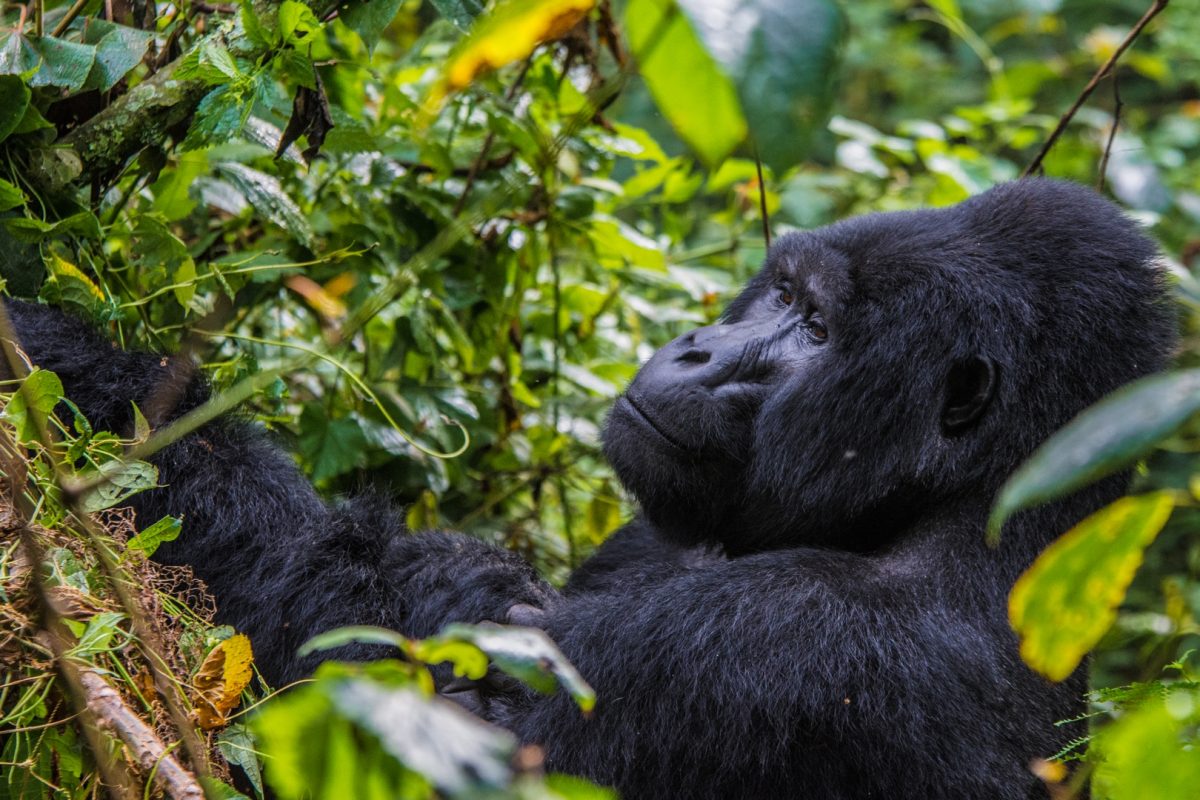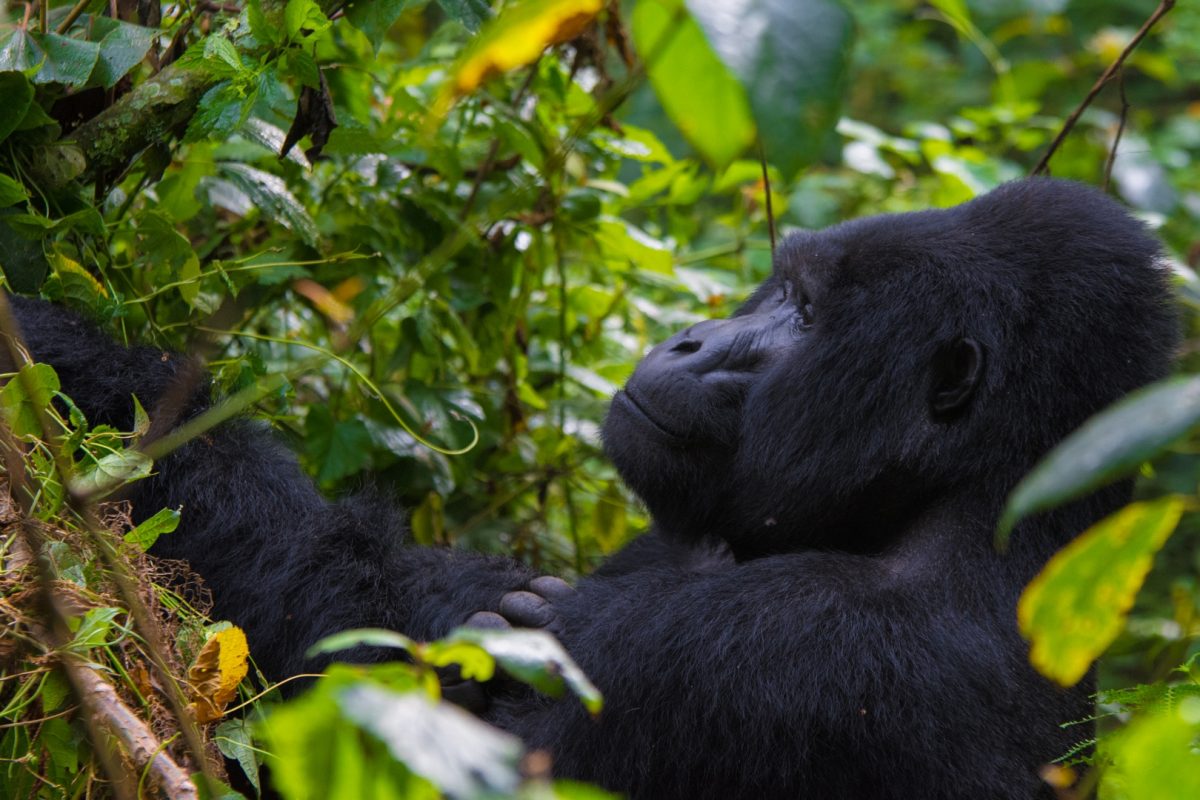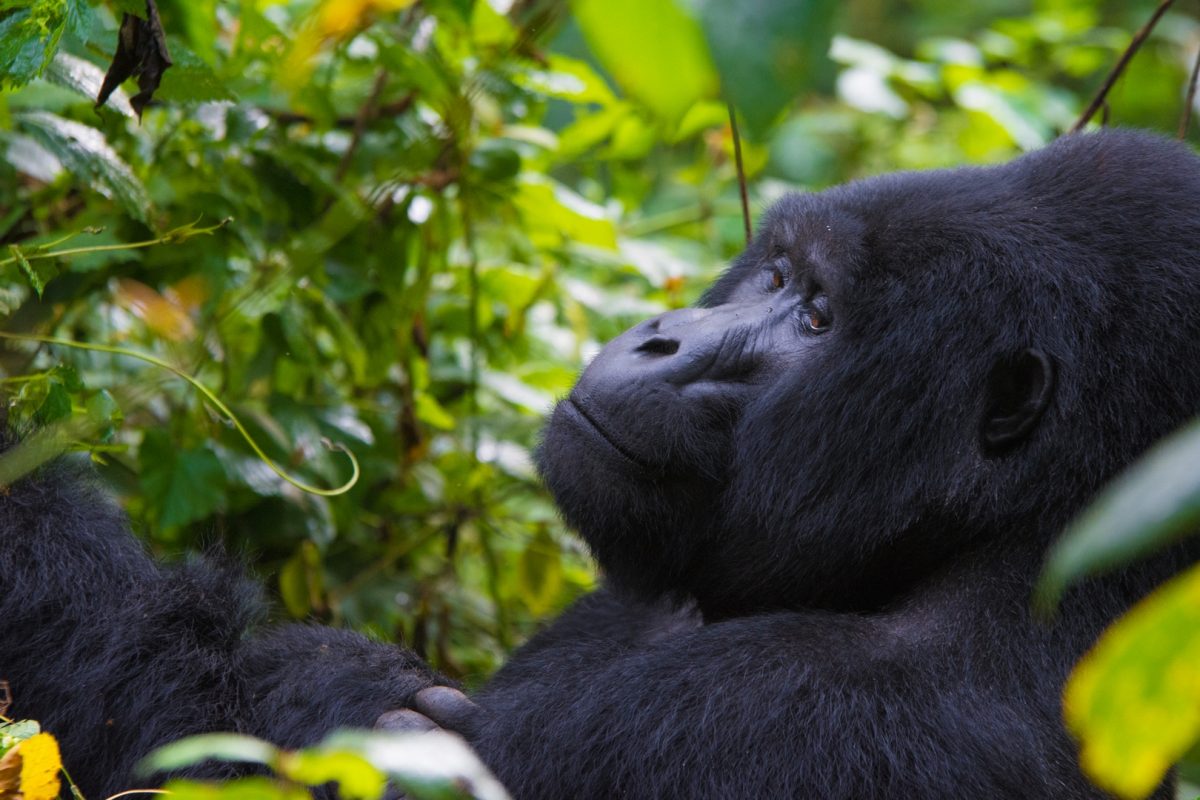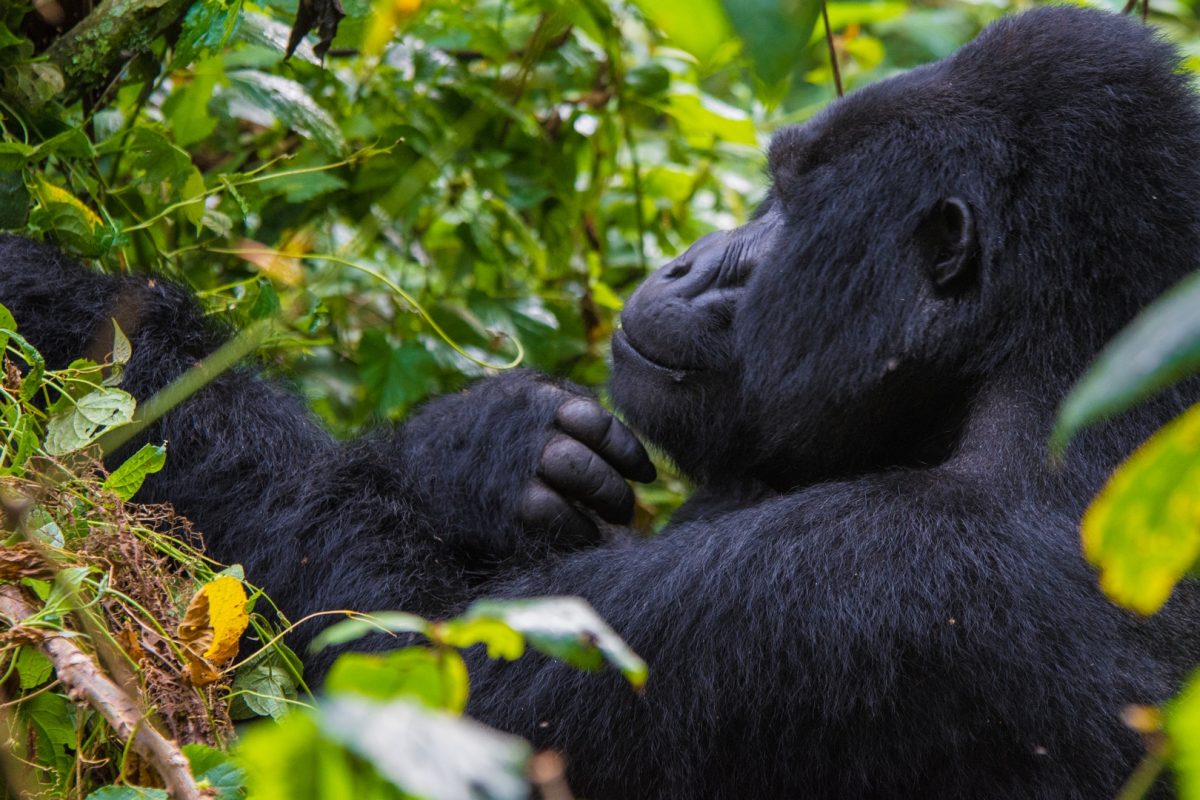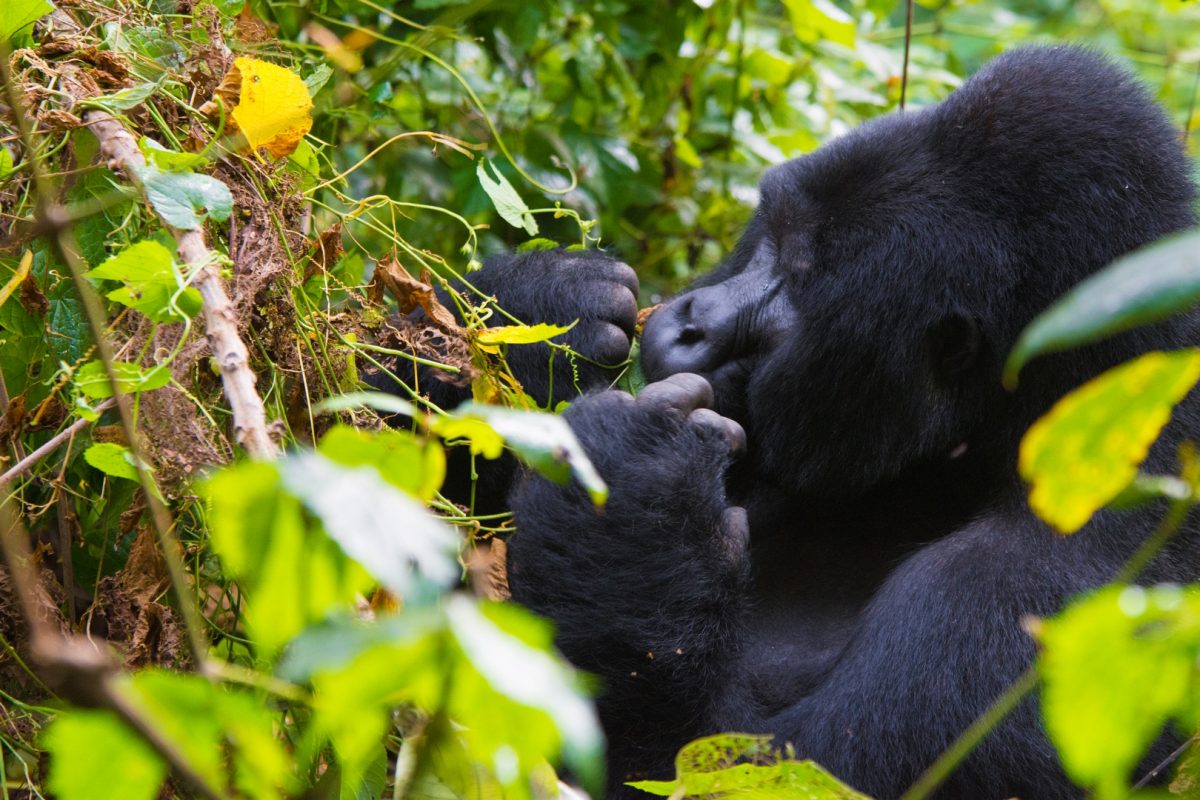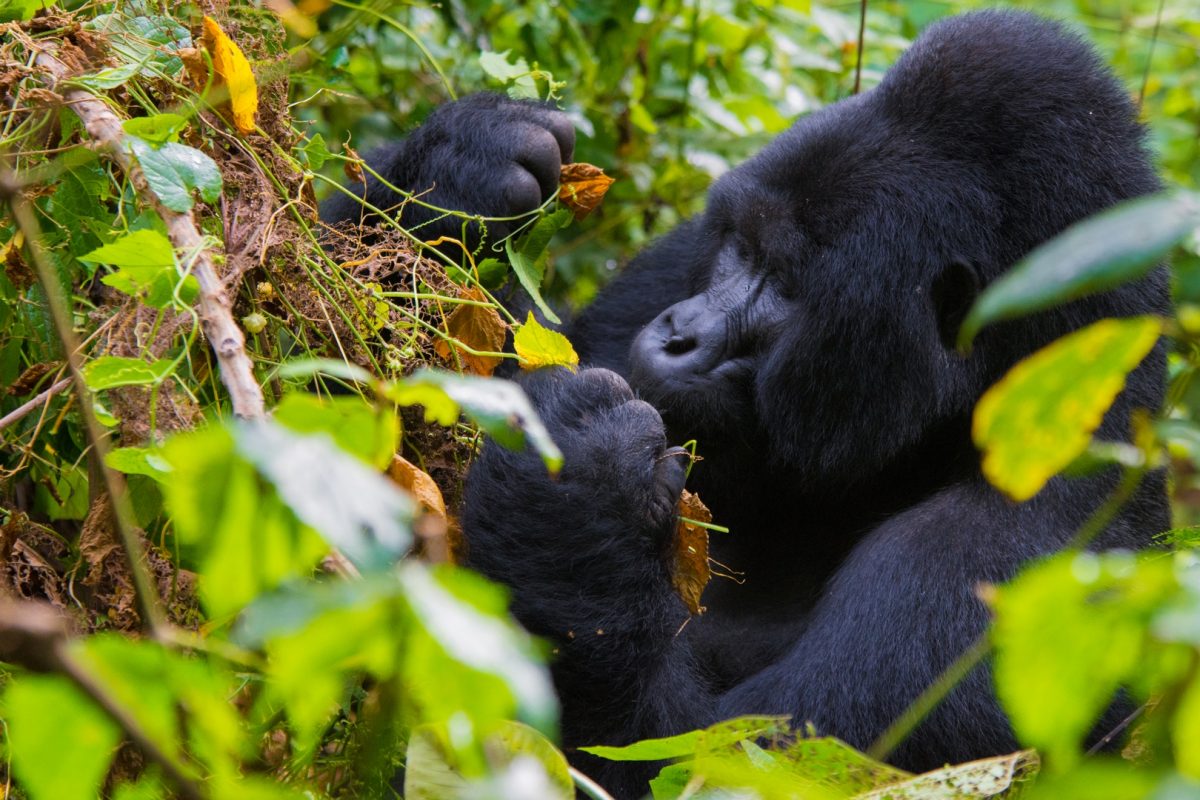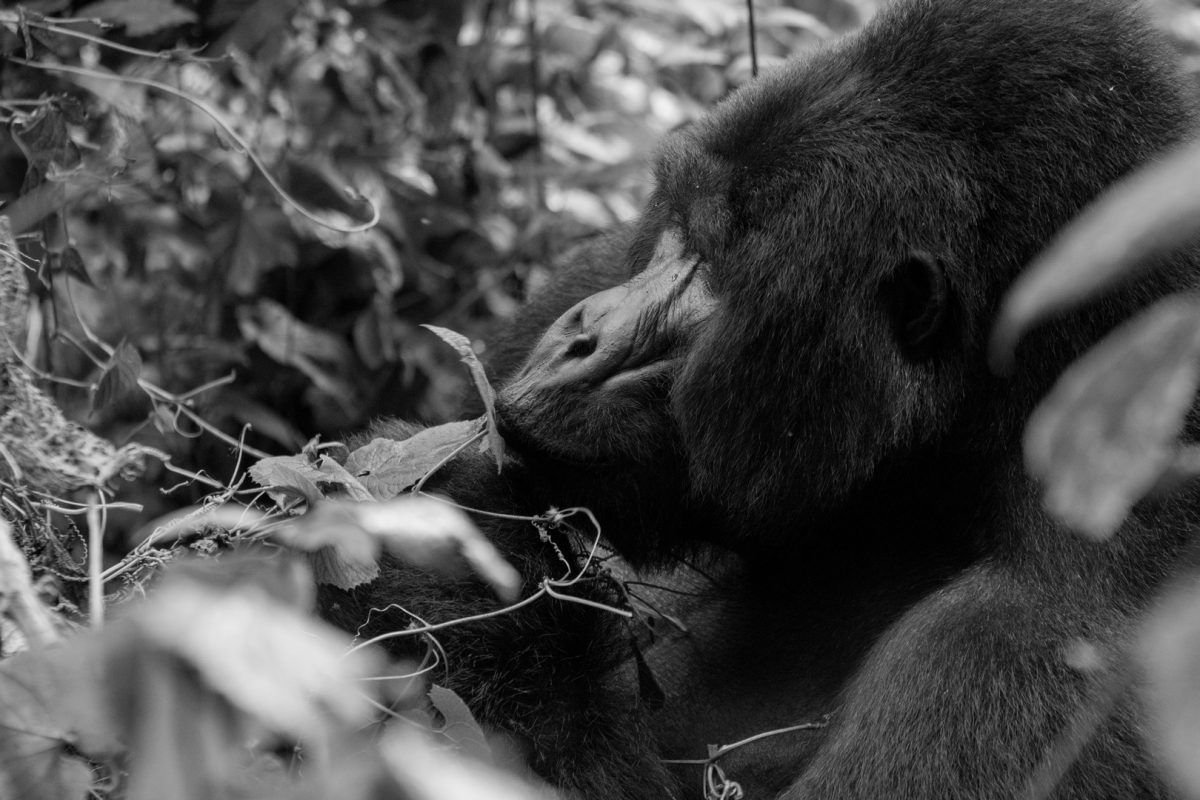Gorilla Trekking in Volcanoes National Park (with Photos and Videos)
Gorilla trekking in Volcanoes National Park is a captivating and memorable experience, allowing visitors to get up close and personal with one of the most endangered species on the planet—the mountain gorilla. Mountain Gorilla trekking in Volcanoes National Park is a conservation success story, contributing to the protection of these endangered animals and their habitat. It’s an emotional and educational experience that leaves a lasting impact on visitors.
Rwanda Gorilla Trekking Permit
Rwanda is known for its gorilla trekking experiences in Volcanoes National Park. Gorilla trekking permits are required to participate in this activity, and these permits are issued by the Rwanda Development Board (RDB). Please note that the information provided here may have changed, so it’s important to verify the current details.
The cost of a gorilla trekking permit in Rwanda was $1,500 per person for non-residents. The cost for East African residents was lower, and there were also discounts for foreign residents in Rwanda. These prices may vary, and there could be changes in the future. It’s crucial to check with the Rwanda Development Board or Acacia Safaris for the most up-to-date information on gorilla trekking permits in Rwanda.
Permits are limited, and it’s advisable to book well in advance. Gorilla trekking is a popular activity, and permits can sell out, especially during peak tourist seasons. Permits can be obtained through the official website of the Rwanda Development Board or through Acacia Safaris Ltd. Booking through Acacia Safaris Ltd is a common practice, as they can help organize the entire gorilla trekking experience.
When booking a permit, you will need to provide identification details for all participants. This is usually in the form of a passport. Participants must be at least 15 years old to take part in gorilla trekking. Gorillas are susceptible to human diseases, so if you are ill on the day of the trek, you may not be allowed to participate. This is to protect the health of the gorillas.
Gorilla Families in Volcanoes National Park
Volcanoes National Park in Rwanda is home to several mountain gorilla families, each with its own unique dynamics and social structure. Please note that the composition of gorilla groups can change over time due to factors such as births, deaths, and group dynamics. Additionally, new groups may form as young males mature and establish their own families. It’s recommended to check with Acacia Safaris Ltd for the latest information on gorilla families in Volcanoes National Park before planning a visit.
A List of Gorilla Families in Volcanoes National Park
- Susa Group (Susa A): One of the original groups studied by Dian Fossey, the Susa group is known for having a large number of members. The group is often found in the higher reaches of the park.
- Sabyinyo Group: Named after the Sabyinyo volcano, this group is known for its proximity to the park’s headquarters. It is a relatively calm and easily accessible group.
- Amahoro Group: “Amahoro” means “peaceful” in Kinyarwanda, and this group is known for its calm and gentle nature. It’s a larger group with a good number of juveniles.
- Umubano Group: This group split from the Amahoro group and is led by a silverback named Charles. “Umubano” means “living together” in Kinyarwanda.
- Hirwa Group: Formed by members from different existing groups, the Hirwa group has established itself as a stable and growing family.
- Kwitonda Group: Originally from the Democratic Republic of Congo, the Kwitonda group migrated to Rwanda. It is named after the dominant silverback, Kwitonda, which means “humble one” in Kinyarwanda.
- Group 13 (Agasha Group): This group is also known as the Agasha group, named after its dominant silverback. It is one of the smaller groups in the park.
- Karisimbi Group: This group is often found on the slopes of Mount Karisimbi, one of the volcanoes in the park.
Rwanda Gorilla Trekking Experience
Gorilla trekking in Rwanda is a unique and unforgettable experience that allows visitors to get up close and personal with mountain gorillas, one of the most endangered species on the planet. The primary destination for gorilla trekking in Rwanda is Volcanoes National Park, located in the northwest part of the country. Gorilla trekking permits are required, and it’s essential to book them in advance. Permits are issued by the Rwanda Development Board (RDB).
Gorilla permits cost $1,500 for non-residents, $1,000 for foreign residents in Rwanda, and a discounted rate for East African residents. Prices may have changed, so it’s crucial to check the current rates.
On the day of the trek, you’ll gather at the park headquarters early in the morning. You’ll be assigned to a specific gorilla group, and a briefing will be provided by experienced guides. The trek duration can vary based on the location of the gorilla group you are assigned. Treks can range from 1 to 4 hours or more.
Once you locate the gorilla group, you’ll spend a maximum of one hour in their presence. This is to minimize disturbance and reduce the risk of disease transmission between humans and gorillas. You’ll have the opportunity to observe the gorillas in their natural habitat, witness their social interactions, and take photographs.
Rwanda Gorilla Encounter
A gorilla encounter in Rwanda is a thrilling and intimate experience that offers a rare opportunity to observe mountain gorillas in their natural habitat.
Obtain a gorilla trekking permit from the Rwanda Development Board (RDB). These permits are limited in number and should be booked well in advance. Attend a pre-trek briefing at the park headquarters on the day before your trek. This briefing provides essential information about the trek, gorilla behavior, safety guidelines, and the dos and don’ts during the encounter.
On the trekking day, gather at the park headquarters early in the morning. You’ll be grouped with other trekkers, and each group is assigned to a specific gorilla family. Accompanied by experienced guides and trackers, embark on the trek into the forest. These guides are knowledgeable about the gorillas, the park, and the surrounding flora and fauna.
The trek duration can vary based on the location of the gorilla family you are assigned. It can range from a short hike to several hours of trekking through dense vegetation and, at times, steep terrain.
Dos and Don’ts for Gorilla Trekking in Rwanda
Gorilla trekking in Rwanda is an incredible experience, but it comes with a set of guidelines to ensure the safety of both visitors and the gorillas, as well as the conservation of these endangered species. Here are some dos and don’ts for gorilla trekking in Rwanda:
Dos
- Follow Guide Instructions: Always listen to and follow the instructions given by your guides. They are experienced in gorilla trekking and know how to ensure a safe and enjoyable experience.
- Maintain Distance: Keep a safe distance from the gorillas. Generally, you should maintain a distance of at least 7 meters (about 21 feet) to minimize the risk of disease transmission.
- Speak Quietly: Keep noise levels to a minimum. Loud noises can be stressful for the gorillas, so it’s important to speak in hushed tones.
- Stay in Group: Stay close to your trekking group. Straying away can disturb the gorillas and increase the risk of getting lost in the forest.
- Limited Time: Limit your time with the gorillas to the designated one hour. This is to minimize disturbance and reduce the risk of habituation to human presence.
- Respect Wildlife: Besides gorillas, there is other wildlife in the park. Respect the entire ecosystem and avoid disturbing other animals.
- Photography: Feel free to take photos, but use only non-intrusive cameras. Flash photography is strictly prohibited, as it can disturb the gorillas.
- Wear Appropriate Attire: Dress appropriately for the trek. Long trousers and long-sleeved shirts are recommended to protect against stinging nettles and insects.
- Be Physically Prepared: Gorilla trekking can be physically demanding. Be physically prepared for the trek, and inform your guides about any health concerns.
- Dispose of Litter Properly: Carry out all litter, including biodegradable items. Leave no trace to preserve the natural environment.
Don’ts
- Don’t Approach Too Closely: Avoid getting too close to the gorillas. Maintain the recommended distance to protect both you and the gorillas.
- No Direct Eye Contact: Gorillas may interpret direct eye contact as a threat or a sign of aggression. Avoid direct eye contact with them.
- No Feeding the Gorillas: Do not attempt to feed the gorillas. Their diet should be natural and unaffected by human interference.
- No Touching: Do not touch the gorillas, even if they come close. This is to protect both you and the gorillas from potential disease transmission.
- No Smoking or Eating: Smoking and eating are not allowed during the gorilla trekking experience. These activities can disturb the gorillas and the natural environment.
- No Running: Avoid sudden movements or running, as it can startle the gorillas.
- No Selfies with Gorillas: While taking photos is allowed, avoid taking selfies with the gorillas. It’s important to prioritize their well-being over personal photo opportunities.
By adhering to these dos and don’ts, you contribute to the conservation of mountain gorillas and ensure a positive and sustainable gorilla trekking experience in Rwanda. Always stay informed about any updates or changes to the guidelines from the Rwanda Development Board or your guides.
Tips for Rwanda Gorilla Trekking
Gorilla trekking in Rwanda is a unique and rewarding experience, but it does require some preparation to ensure a safe and enjoyable adventure. You’ll contribute to the sustainability of gorilla trekking and ensure a positive experience for both visitors and the magnificent mountain gorillas in Rwanda. Always check for any updates or changes to guidelines before your trek.
Before the Trek
- Book Permits in Advance: Gorilla trekking permits are limited, so it’s crucial to book well in advance through the Rwanda Development Board or Acacia Safaris Ltd.
- Check Health Requirements: Ensure you are in good health. If you are feeling unwell on the day of the trek, you may not be allowed to participate to prevent disease transmission to the gorillas.
- Dress Appropriately: Wear comfortable and sturdy clothing suitable for trekking through the forest. Long trousers and long-sleeved shirts are recommended to protect against nettles and insects.
- Wear Comfortable Hiking Boots: Choose sturdy, comfortable hiking boots with good ankle support. The terrain can be uneven and muddy.
- Pack Essentials: Bring essentials such as a daypack, water, snacks, a rain jacket, sunscreen, insect repellent, and a camera with a non-intrusive lens for photography.
During the Trek
- Follow Guide Instructions: Listen carefully to your guides and follow their instructions. They are experienced in gorilla trekking and are there to ensure your safety and the well-being of the gorillas.
- Stay Hydrated: Bring enough water to stay hydrated during the trek, especially if the weather is warm.
- Move Slowly and Steadily: Gorilla trekking can involve steep and uneven terrain. Move at a steady pace, and take breaks when needed.
- Respect Wildlife: Keep noise levels to a minimum to avoid disturbing other wildlife. Maintain a respectful distance from all animals.
During the Gorilla Encounter
- Stay calm and quiet: Once you reach the gorillas, remain calm and keep your voice low. This helps minimize stress for the gorillas.
- No Direct Eye Contact: Avoid direct eye contact with the gorillas, as it can be perceived as a threat.
- Limited Interaction: Respect the one-hour time limit with the gorillas. This is to minimize disturbance and allow the gorillas to maintain their natural behavior.
- Photograph Respectfully: Use your camera responsibly, without flash, and follow the guidelines provided by your guides. Do not use selfie sticks.
- Maintain Distance: Keep a safe distance from the gorillas, as recommended by your guides. This is for your safety and theirs.
After the Trek
- Reflect on the Experience: Take a moment to appreciate the unique and privileged experience of encountering mountain gorillas in the wild.
- Contribute to Conservation: Recognize that your permit fees contribute to the conservation of mountain gorillas and their habitat. Consider additional donations or support local conservation initiatives.

